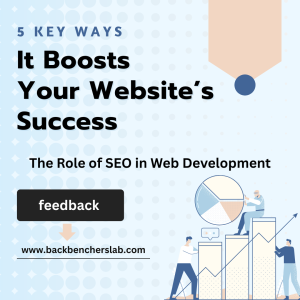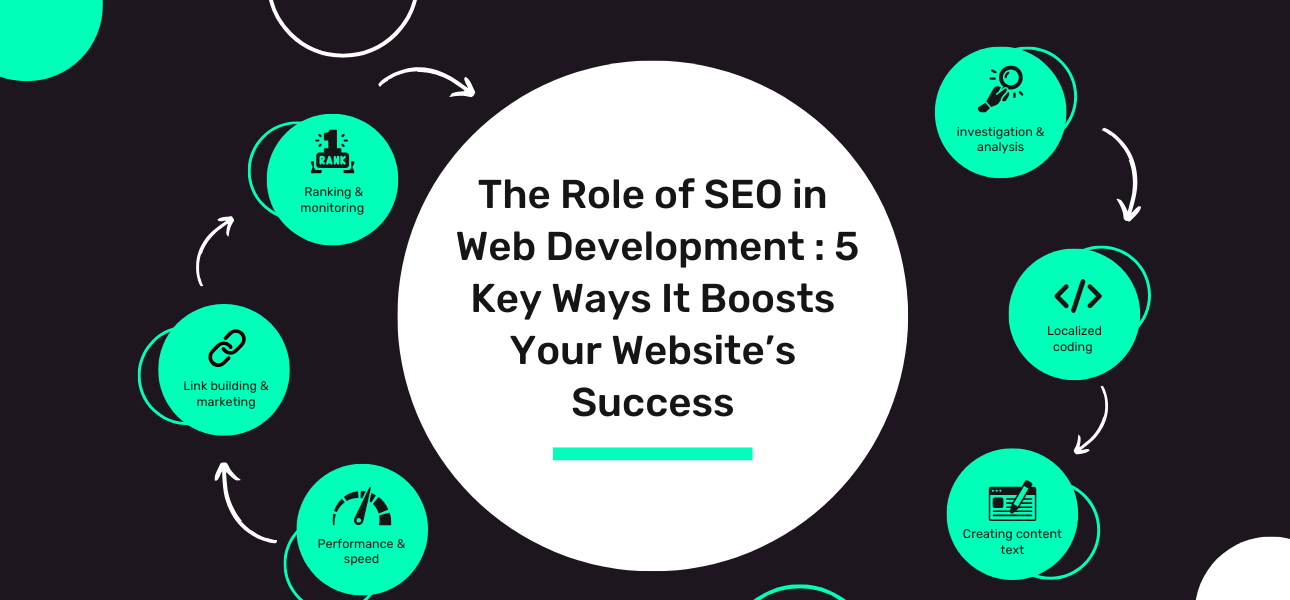5 Powerful SEO Strategies to Grow Your Website .
Creating a visually appealing website is just the first step. For long-term success, SEO (Search Engine Optimization) is crucial. SEO ensures that your website not only attracts traffic but also provides an optimal user experience, improving engagement and conversions. Integrating SEO into the web development process enhances both user experience and your website’s visibility in search engines. Here’s how SEO boosts your website’s performance :
1. SEO Guides Your Website Structure for Better User Experience
A clear, well-organized website structure is essential for both users and search engines. SEO helps create a layout that improves navigation and ensures search engines can crawl and index pages effectively. With SEO, your website’s navigation, URL structure, and header tags are optimized for both usability and search engine visibility.
- Navigation: Easy-to-use menus help users find information faster, increasing time on site and reducing bounce rates.
- SEO-Friendly URLs: Clear, descriptive URLs not only aid in navigation but also improve rankings by signaling to search engines what the page is about.
- Header Tags: Proper use of header tags (H1, H2, H3) structures content for better readability, making it easy for both users and search engines to understand.
Pro Tip: Utilize breadcrumb navigation for an organized, user-friendly structure that also helps search engines understand your site better.
2. Mobile Optimization Improves Rankings
Mobile optimization is no longer optional. With Google’s mobile-first indexing, your website’s mobile version is now the primary factor in search rankings. A mobile-friendly design ensures a seamless user experience across devices, which ultimately improves rankings and reduces bounce rates.
- Responsive Design: Ensures that your website adjusts to fit any screen size, providing a great experience whether users are on smartphones, tablets, or desktops.
- SEO Impact: Mobile-friendly websites rank higher in Google’s search results, improving visibility and user engagement.
Pro Tip: Always test your website on different mobile devices to ensure it works smoothly across all platforms. Use Google’s Mobile-Friendly Test to identify any issues before launch.
3. SEO Enhances Site Speed and Performance
Site speed is a key factor in user experience and SEO rankings. A slow-loading website can turn visitors away and negatively impact your search engine rankings. SEO best practices, such as image compression, minification, and caching, ensure your website loads quickly, keeping both users and search engines happy.
- Image Optimization: Compresses images to reduce file sizes without sacrificing quality, improving page load times.
- Minification: Reduces the size of CSS, JavaScript, and HTML files, which improves loading speed.
- Caching: Speeds up loading times by storing content closer to the user through Content Delivery Networks (CDNs).
Pro Tip: Use tools like Google PageSpeed Insights to test your website’s performance and find areas for improvement. Optimizing speed can significantly reduce bounce rates and improve rankings.

4. SEO-Friendly Content Drives Organic Traffic
Quality content is the backbone of any website, but SEO ensures that content reaches your target audience. SEO guides content creators by focusing on keyword optimization, content structure, and internal linking. Well-optimized content not only meets user intent but also helps your site rank higher in search engine results.
- Keyword Optimization: By researching and using relevant keywords, you ensure your content aligns with what users are searching for, improving visibility.
- Content Structure: Properly structured content with clear headings (H1, H2, H3) makes it easier to read and helps search engines understand your content.
- Internal Linking: Linking to other pages within your site helps search engines crawl your content and provides a better user experience by guiding visitors to related information.
Pro Tip: Conduct keyword research before writing content to ensure it matches what users are searching for, improving both traffic and user engagement.
5. SEO Boosts Website Security and Trustworthiness
Security is not just important for user trust; it also affects SEO rankings. Google favors secure websites with HTTPS, rewarding them with higher rankings. SEO ensures your website is secure by encouraging the implementation of SSL certificates and safe hosting practices.
- SSL Certificates: Secures user data and increases trust. Websites with HTTPS are prioritized in Google rankings.
- Safe Hosting: Choose a reliable hosting provider with strong security measures to ensure your site stays secure and available.
- Regular Updates: Keeping software and plugins updated prevents vulnerabilities and ensures a safe, functioning site.
Pro Tip: Always implement HTTPS on your site and regularly update your security protocols. Google Chrome marks non-HTTPS sites as “Not Secure,” which can deter visitors and affect rankings.
Conclusion
Incorporating SEO into the web development process is crucial for building a website that not only looks good but also ranks well and performs efficiently. From improving site structure and content to optimizing for mobile, speed, and security, SEO enhances user experience and drives long-term success. Whether you’re building a new site or redesigning an old one, SEO should be an integral part of the development process. By doing so, you’ll ensure your site thrives in the competitive digital landscape and reaches its full potential.

